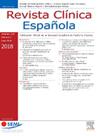分析性生物标志物还是PaO2/FiO2比率更能预测2019冠状病毒病患者的预后?
IF 1.7
4区 医学
Q2 MEDICINE, GENERAL & INTERNAL
引用次数: 0
摘要
本研究旨在通过PaO2/FiO2 (PAFI)和炎症程度描述患者的特征和结局。方法回顾性队列研究,收集2020年3月1日至2023年3月1日来自西班牙半covid -19登记处的患者数据。在入院前48小时内接受糖皮质激素(CS)治疗COVID-19的PAFI数据(<100 vs. 100-200 vs. 200-300 vs. >300)的非院内患者被纳入研究。5314例患者符合本研究的纳入标准。主要终点是住院死亡率。结果pafi组住院死亡率较高;100(51.5%比41.2% vs 25.8%比12.3%,术中;措施)。他们还需要更多的NIMV、IMV和ICU住院,并且住院时间更长。PAFI>;300和4-5高危标准的患者死亡率高于PAFI 200-300和1-2分析性炎症标准的患者。与较高住院死亡率相关的危险因素有:年龄(OR = 1.06;1.05-1.06),中度(OR = 1.87;1.49-2.33)和重度(OR = 2.64;1.96-3.55)依赖度、血脂异常(OR = 1.20;1.03-1.39),较高的Charlson指数(OR = 1.19;1.14-1.24),入院时呼吸急促(2.23;1.91-2.61),入院时高危标准数较高,入院时PAFI较低。女性(OR = 0.77;0.65-0.90)和RDSV的使用(OR = 0.72;0.56 ~ 0.93)为保护因素。结论PAFI越低,COVID-19患者炎症程度越高,住院死亡率越高。炎症升级先于呼吸恶化,应作为决定使用抗炎/免疫抑制治疗的严重程度的早期预测因子。本文章由计算机程序翻译,如有差异,请以英文原文为准。
¿Qué factor predice mejor el pronóstico en pacientes con COVID-19: los biomarcadores analíticos o la relación PaO2/FiO2?
Background
The study aimed to describe patient characteristics and outcomes by PaO2/FiO2 (PAFI) and degree of inflammation.
Methods
Retrospective cohort study with data on patients collected from March 1st, 2020 to March 1st,2023, from the Spanish SEMI-COVID-19 Registry. Non-nosocomial patients with data on PAFI (<100 vs. 100-200 vs. 200-300 vs. >300) who received corticosteroids (CS) for COVID-19 in the first 48 h of admission were included in the study. 5,314 patients met the inclusion criteria for the present study. The primary outcome was in-hospital mortality.
Results
Higher in-hospital mortality was found in the groups with PAFI< 100 (51.5% vs. 41.2% vs. 25.8% vs. 12.3%, P<.001). They also required more NIMV, IMV, and ICU admission, and had longer hospital stays. Those patients with PAFI>300 and 4-5 high-risk criteria presented higher mortality than the patients with PAFI 200-300 and only 1-2 criteria of analytical inflammation. Risk factors associated with higher in-hospital mortality were age (OR = 1.06; 1.05-1.06), moderate (OR = 1.87; 1.49-2.33) and severe (OR = 2.64; 1.96-3.55) degree of dependency, dyslipidemia (OR = 1.20; 1.03-1.39), higher Charlson index (OR = 1.19; 1.14-1.24), tachypnea on admission (2.23; 1.91-2.61), the higher number of high-risk criteria on admission, and lower PAFI on admission. Female gender (OR = 0.77; 0.65-0.90) and the use of RDSV (OR = 0.72; 0.56-0.93) were found to be protective factors.
Conclusions
The lower the PAFI and the higher the degree of inflammation in COVID-19, the higher the in-hospital mortality. Inflammatory escalation precedes respiratory deterioration and should serve as an early predictor of severity to deciding the use of anti-inflammatory/immunosuppressive therapy.
求助全文
通过发布文献求助,成功后即可免费获取论文全文。
去求助
来源期刊

Revista clinica espanola
医学-医学:内科
CiteScore
4.40
自引率
6.90%
发文量
73
审稿时长
28 days
期刊介绍:
Revista Clínica Española published its first issue in 1940 and is the body of expression of the Spanish Society of Internal Medicine (SEMI).
The journal fully endorses the goals of updating knowledge and facilitating the acquisition of key developments in internal medicine applied to clinical practice. Revista Clínica Española is subject to a thorough double blind review of the received articles written in Spanish or English. Nine issues are published each year, including mostly originals, reviews and consensus documents.
 求助内容:
求助内容: 应助结果提醒方式:
应助结果提醒方式:


